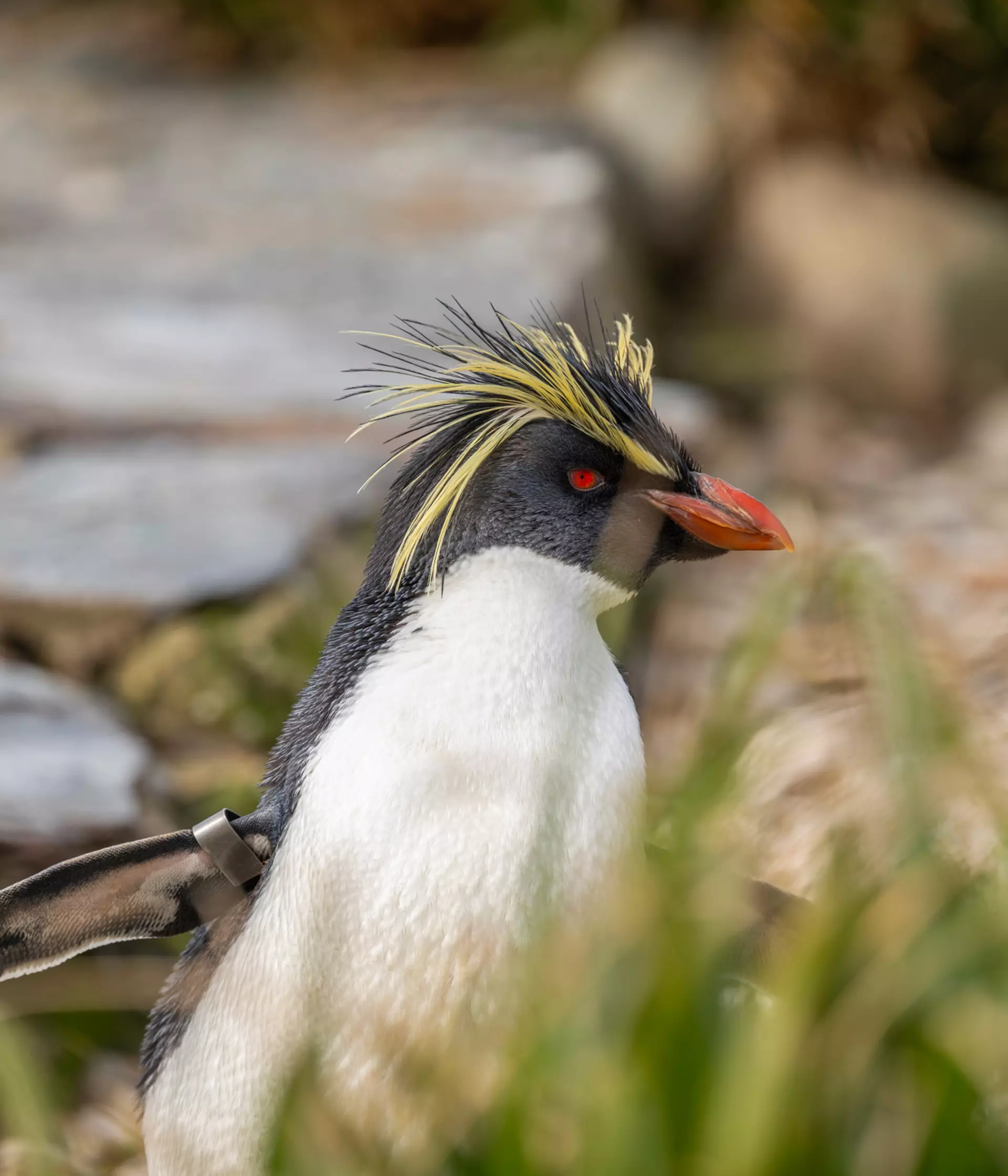Area of zoo
Europe
Enclosure status
Open
Population in the wild
413,700
IUCN status
Endangered
Scientific name
Eudyptes moseleyi
Order
Sphenisciformes
Type
Birds
Family
Spheniscidae
Region
Africa
Habitat
Steep, rocky coasts.
Rockhopper penguin facts
- Rockhoppers are one of the world’s smallest penguins, reaching 50 cm tall, but they have big personalities!
- As well as giving loud cries, these birds shake their yellow eyebrows to attract a mate. Nests are usually small scrapes lined with vegetation. Parents take turn looking after the egg, both not being afraid to peck at anything that strays too close.
- During breeding season, rockhoppers congregate in large colonies. They annual return to the same breeding ground, often returning to the same nest with the same partner.
- When raising their chicks, both rockhoppers will help keep the egg warm. The pair also acts very aggressively to anything that may come too close to their brood, often pecking threats away
- Due to their rocky habitat, rockhoppers can’t slide on their bellies to get around. Instead, these penguins hop to get around, hence the name!
- There are two species of rockhopper penguin, the northern and southern, both look very similar.
What do rockhopper penguins eat?
Krill, squid, octopus, fish, molluscs, plankton, cuttlefish and crustaceans.
What do rockhopper penguins look like?
Rockhoppers are one of the smallest penguins that are recognisable by their spiky yellow and black crests on their head.
Where do rockhopper penguins live?
Southern Oceans, but travel as far north as the southern most tip of Africa and South America.
Rockhopper penguin threats
Pollution from oil spills, overfishing and hunting by seals and sharks.
